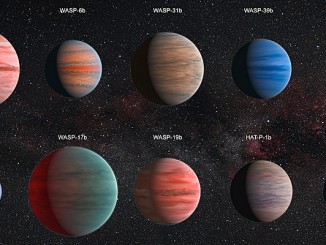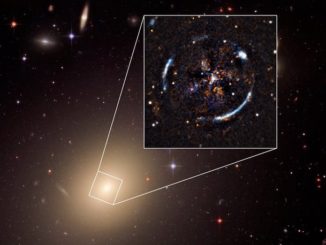The Virgo galaxy cluster if familiar to amateur and professional astronomers alike, a rich collection of more than 1,300 galaxies, including dozens within the reach of relatively small telescopes. NGC 4388, captured here by the Hubble Space Telescope in 2016, is an intriguing member of the cluster, undergoing a transformation of sorts due to gravitational interactions with other members of the group. The outskirts of NGC 4388 appear relatively smooth and featureless, familiar aspects of elliptical galaxies, but symmetric spiral arms extend from the galaxy’s core, with bright blue concentrations indicating areas of recent star formation.
“Despite the mixed messages, NGC 4388 is classified as a spiral galaxy,” according to the European Space Agency’s Hubble web page. “Its unusual combination of features are thought to have been caused by interactions between NGC 4388 and the Virgo Cluster. Gravitational interactions — from glancing blows to head-on collisions, tidal influencing, mergers and galactic cannibalism — can be devastating to galaxies. While some may be lucky enough to simply suffer a distorted spiral arm or newly-triggered wave of star formation, others see their structure and contents completely and irrevocably altered.




